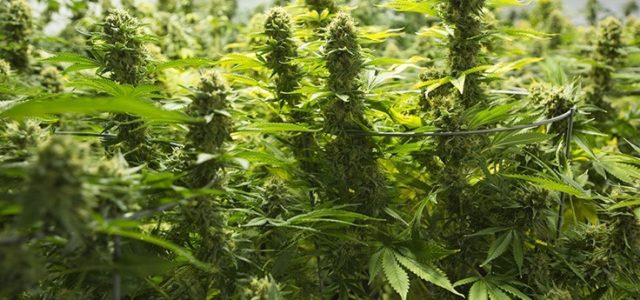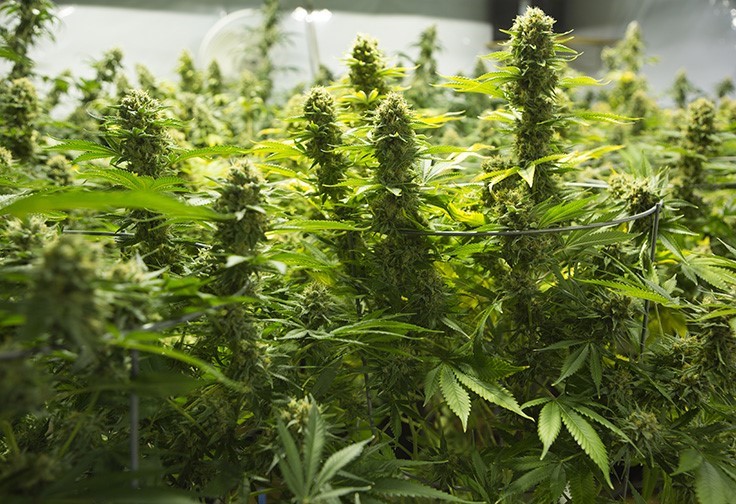Whisky Exec Drops Single Malt for World of Cannabis
Marijuana Industry News September 14, 2018 MJ Shareholders


When the first batch of newly mandated California cannabis test results was made public in late July, the results weren’t terrific. About 20 percent of cannabis products had failed for one reason or another.
“First tests are in,” an Orange County Register headline read, “and 1 in 5 marijuana samples in California isn’t making grade.”
The statistics didn’t improve over the next month, either. From July 1 to Aug. 29, the Bureau of Cannabis Control received 10,695 certificates of analysis; 1,904 batches had failed.
That failure rate spans all major product categories, although it’s notably more pronounced among edibles. Out of 1,979 tested batches, 651 batches of edibles failed their laboratory tests (33 percent).
“Certainly pesticide residues are a problem, which are indicative of people trying to treat pests, but I think the types of tests they’re [failing] are mostly around food safety and E.coli and salmonella, which go into edibles, and then the other test is pesticides, which is people using unacceptable pesticides,” Jon Vaught, CEO of Front Range Biosciences, a Colorado-based agricultural biotech company with cultivation partnerships in California, told Cannabis Business Times.
Beginning July 1, all cannabis products sold in California’s licensed dispensaries must have first passed an independent laboratory test before hitting the retail shelves. Those tests confirm cannabinoid content, moisture content, category-I and -II residual pesticides, microbial impurities and “foreign materials.” (Starting later this year, in December, labs will also test for heavy metals, mycotoxins and terpenoids.)
California BCC Required Lab… by on Scribd
Many of the early failures thus far have involved improper packaging and cannabinoid content claims—growers and processors that had inflated their products’ THC content on the label, for instance. Those can be easily corrected. Other failures, however, involve more costly microbial impurities and pesticide use.
“I think one thing we want to do … is not jump to any early conclusions because [in] the first 12 months of new regulations, new products going to market, new companies in the space—all of those things combined together could lead to massive changes, ups and downs, and how many pass and how many fail,” Vaught said.
California Cannabis Testing… by on Scribd
“It’s not surprising to me. Not at all, actually,” Troy Rippe, senior technical adviser for Surna Inc., told Cannabis Business Times. “If you can’t tightly control the environment and you haven’t designed your climate control system correctly, then you have to do Band-Aids or make-up moves to try to grow a crop. To me, it’s not surprising. In fact, it even seems a little low, if anything, based on what I’ve seen out there.”
What’s out there, in the state of California, is a legacy cannabis market that’s shuffling quickly to come into compliance with new regulations that began to go into effect Jan. 1. Now that lab testing is required, Rippe said, that process is being sped up.
“At the end of the day, it’s going to take some time for people to adjust their growing practices and make sure they’re compliant with the current regulations,” Vaught added.
As of Aug. 6, the BCC had licensed 33 independent testing labs. The California Department of Food and Agriculture had licensed more than 2,800 cultivators, and each one must funnel batches of products through the licensed labs.
That ratio is a hurdle on the road out of California’s gray-area legacy and into the regulated market. Surna co-founder and senior technical adviser Brandy Keen said that a long history of secretive outdoor grows cemented certain cultivation habits that are only now being shaken off.
“Everyone just kind of developed the ways that they cultivated with absolutely no governing body saying, ‘Is the result OK?'” Keen said. “I don’t think any cultivators within California really knew what to expect, for instance, from the perspective of mold or fungus being found on their products, or bacteria being found on their products or if the pesticides they’d been using were still detectable down the road.”
Testing data provided by the BCC does not break down the source of tested flower, inhalables or edibles (whether outdoor or indoor).
The new testing regulations are an ongoing narrative not only in California, but in every state that has legislated some sort of cannabis market. In California, though, state regulators have been grappling all year with a statewide industry that has long predated any bureaucratic involvement.
“Mandatory statewide testing is a new thing, and it’s going to take some time for everything to run smoothly, but on the whole we’re pleased with how things are progressing,” Bureau of Cannabis Control spokesman Alex Traverso told the Associated Press
In the meantime, Vaught said the cannabis industry should employ growing practices that include an integrated pest management (IPM) system and consider adopting Good Manufacturing Practice (GMP) borrowed from other industries like drugs, nutraceuticals and food products. Implementing barcode systems to track data internally and properly training all employees—from entry-level all the way up to management—can help ensure all products pass testing and make it into the marketplace, he said.
“Whenever you’re putting products out on the market, quality assurance, quality control, good documentation practices, making sure that things are getting reviewed before release to the public, and double-checking, triple-checking, [is all important],” Vaught said. “I would encourage businesses in the industry to look to those examples for how to properly regulate this internally because at the end of the day, you’re responsible for what you put out in the market, and yes, some people may not like the regulations, but the regulations are put in there to provide some guardrails around human safety and make sure the products are safe for consumers.”
Top photo courtesy of Adobe Stock
MJ Shareholders
MJShareholders.com is the largest dedicated financial network and leading corporate communications firm serving the legal cannabis industry. Our network aims to connect public marijuana companies with these focused cannabis audiences across the US and Canada that are critical for growth: Short and long term cannabis investors Active funding sources Mainstream media Business leaders Cannabis consumers










